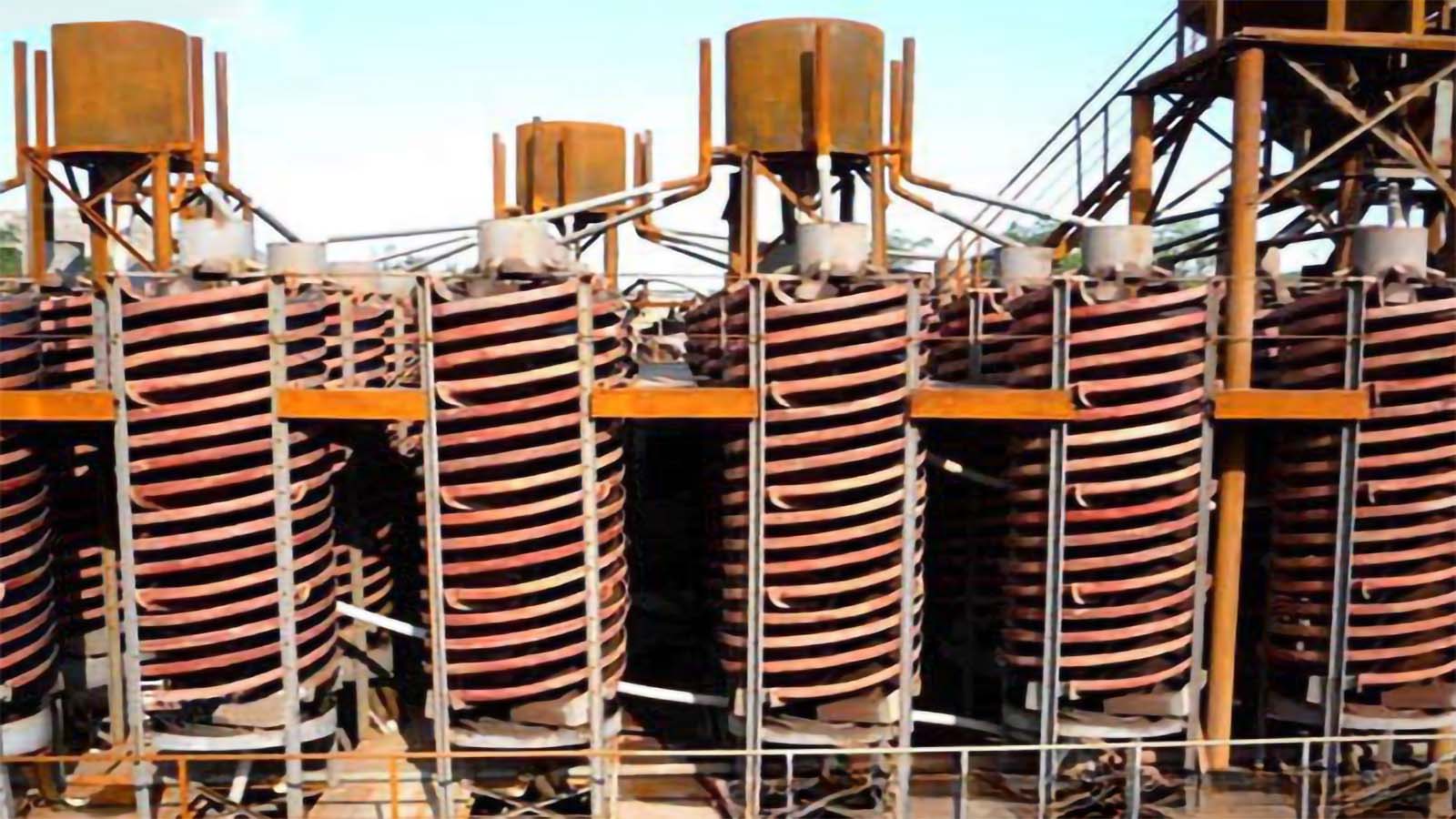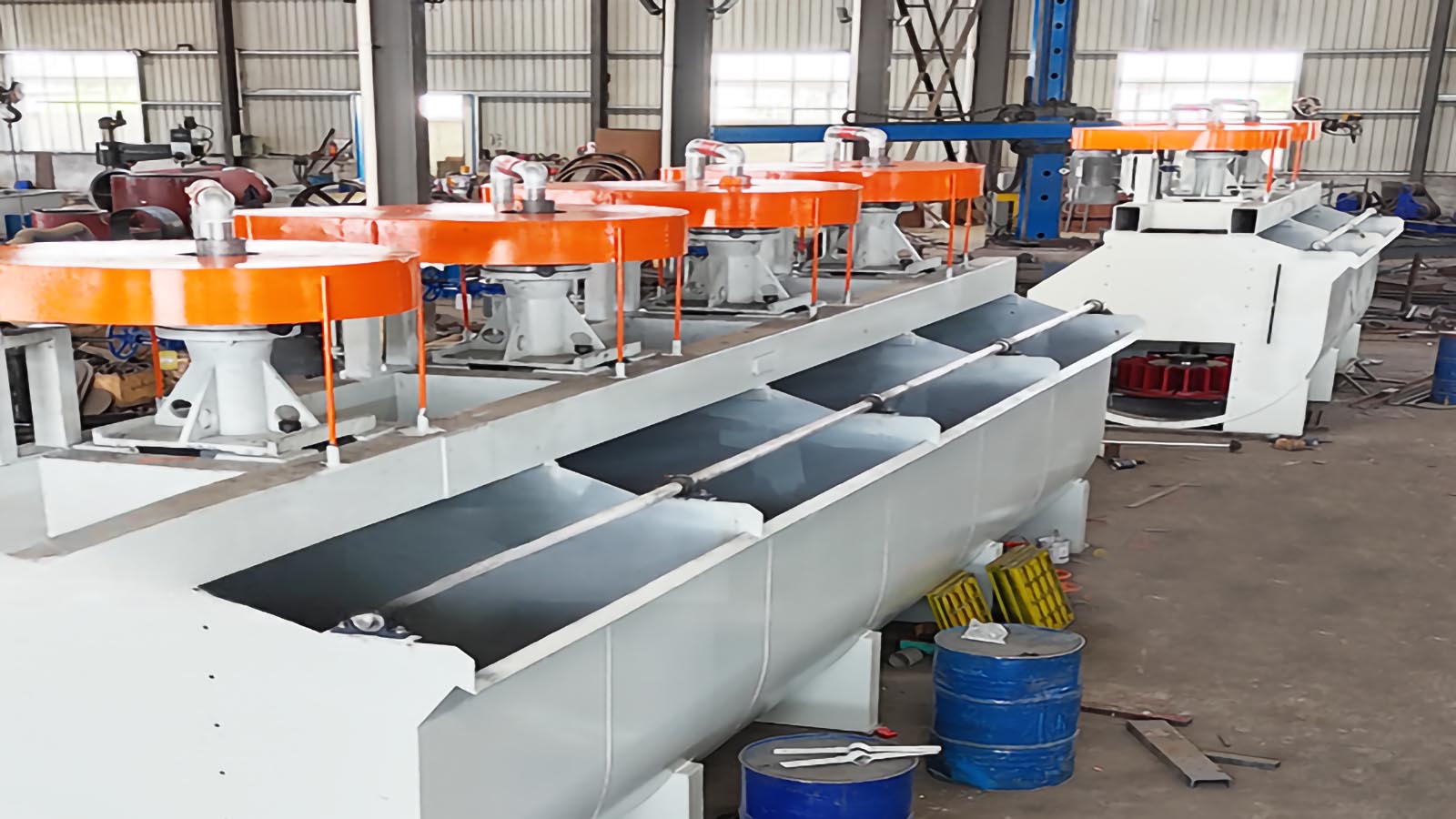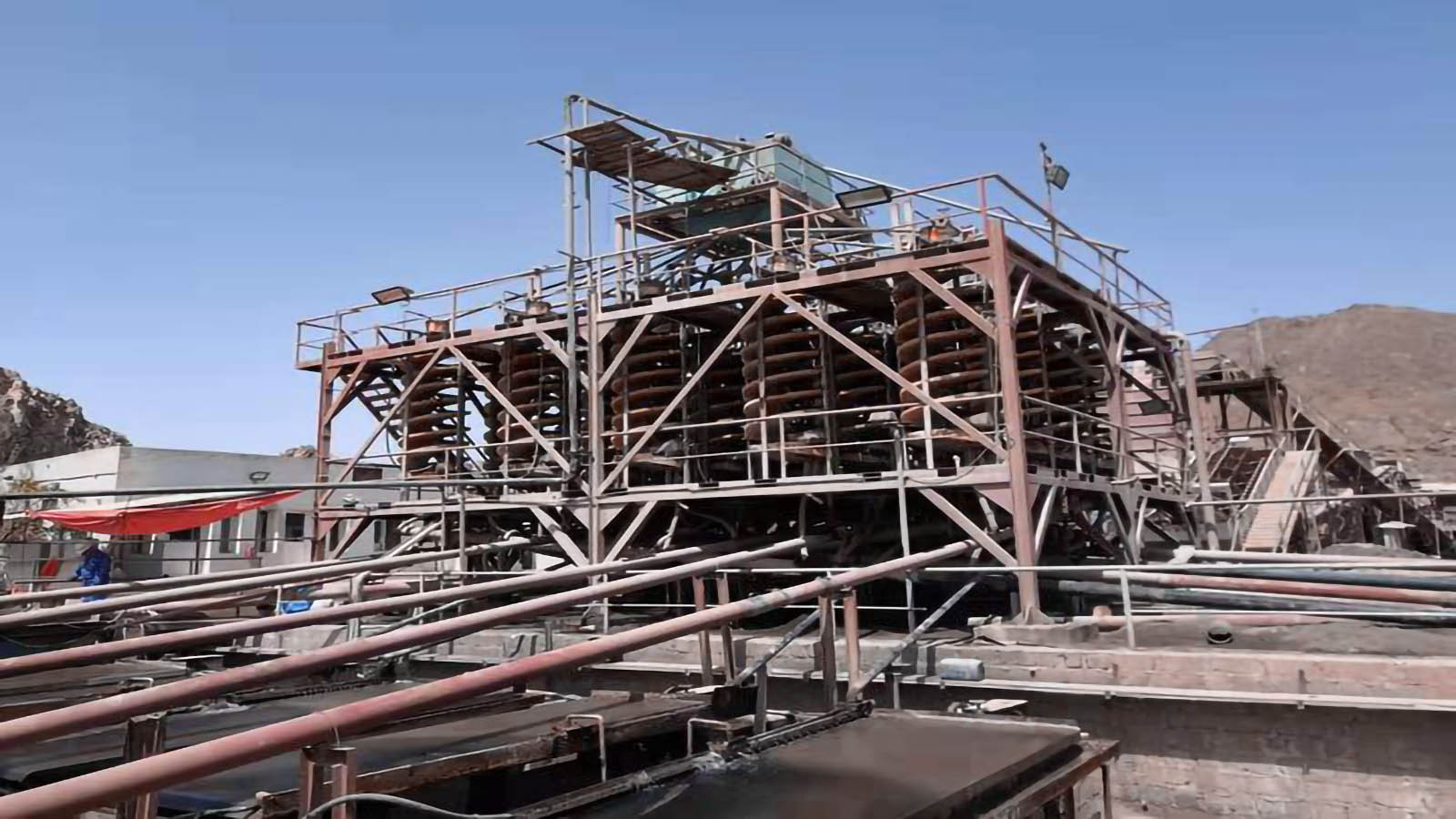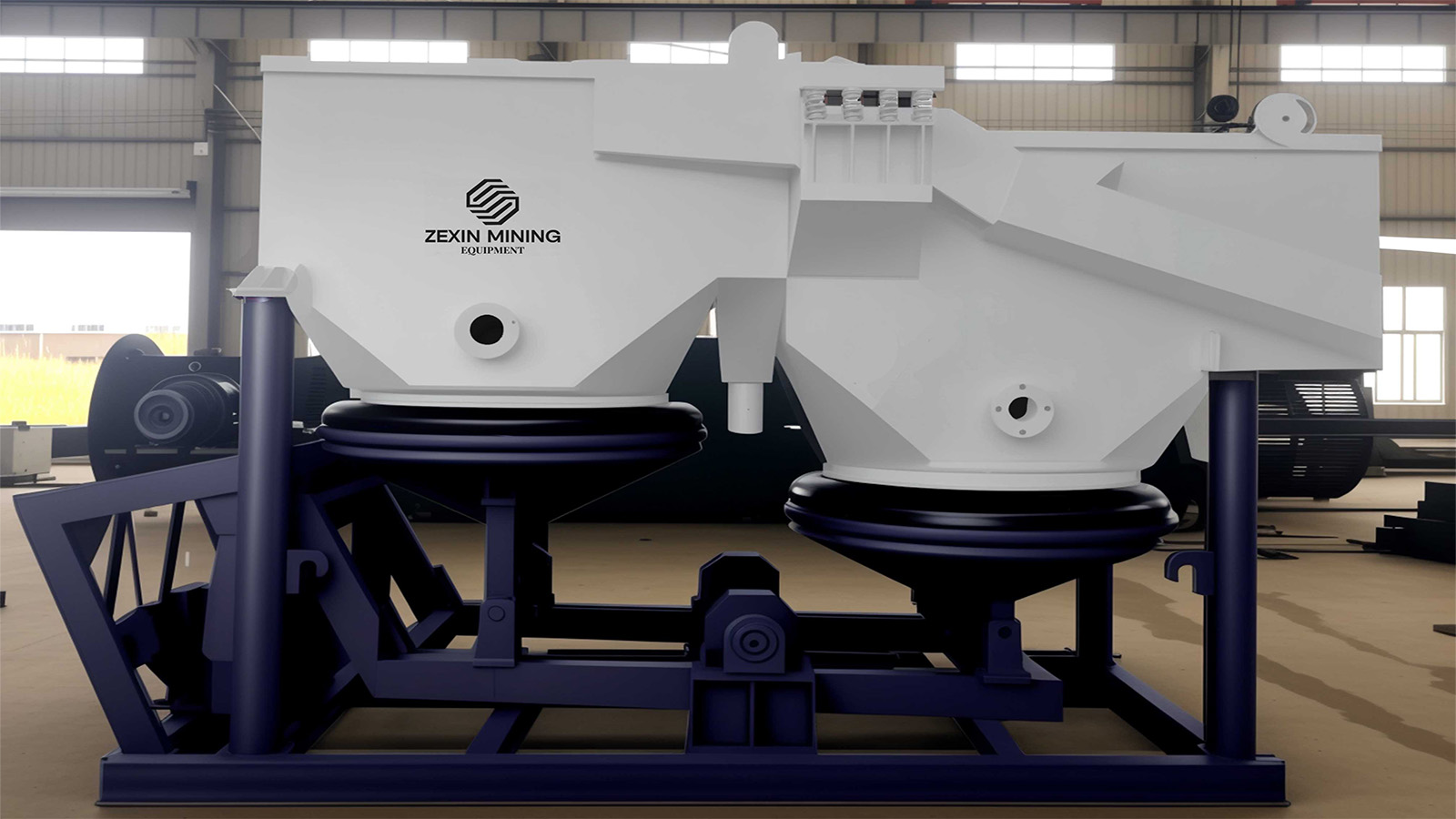
Rare earth elements (REEs) are critical components in numerous high-tech applications, from smartphones to electric vehicles and renewable energy systems. As strategic resources, their efficient extraction and processing have become increasingly important in the global supply chain. Gravity separation represents one of the most fundamental yet effective methods for concentrating rare earth minerals, leveraging the significant density differences between valuable rare earth minerals and gangue materials.
Principles of Gravity Separation for Rare Earth Minerals
Gravity separation exploits the substantial density differential between rare earth minerals (typically 4.9-5.5 g/cm³ for minerals like monazite) and common gangue minerals such as quartz, feldspar, and calcite (2.6-2.8 g/cm³). When subjected to gravitational or centrifugal forces within specialized equipment, these minerals separate based on their settling velocities. The heavier rare earth mineral particles tend to settle more rapidly, allowing for effective concentration even in complex ore bodies.
Unlike chemical processing methods that often require complex reagent systems and strict environmental controls, gravity separation offers a straightforward, environmentally friendly approach to initial concentration. Particularly valuable during early processing stages, gravity methods can rapidly reject significant volumes of waste material, reducing the burden on downstream refining processes and lowering overall operational costs.
Primary Gravity Separation Technologies for Rare Earth Processing
1. Jigging Separation
Jigging technology is particularly effective for processing coarser rare earth ore fractions (+0.5mm-5mm). The process utilizes pulsating water currents to stratify minerals according to density. Within the jig, rare earth minerals rapidly settle to form a concentrated layer over the screen deck, while lighter gangue materials remain suspended and are carried away.
Modern jigging operations optimize process parameters to achieve optimal concentration ratios while minimizing REE losses to tailings. Various jig configurations can be tailored to different mineralogical characteristics, enhancing separation efficiency significantly compared to conventional setups.
2. Shaking Table Concentration
For finer rare earth particles (typically below 2mm), shaking tables provide exceptional separation precision. After initial concentration via jigging or spiral separators, the pre-concentrated material undergoes further upgrading on shaking tables, where the combined effects of differential particle motion and stratified water flow create highly precise density-based separation.
Modern tables feature specially designed riffles and deck surfaces that trap heavier rare earth minerals while allowing lighter gangue particles to wash across. By carefully controlling table stroke length, frequency, deck angle, and wash water flow rates, operators can achieve optimal separation for various rare earth mineral assemblages, producing high-grade concentrates suitable for subsequent chemical processing.
3. Spiral Separator Processing
Spiral separators excel at processing intermediate size fractions (generally below 1mm) of rare earth ores. These elegantly simple devices utilize the combined effects of gravity, centrifugal force, and flowing film dynamics to achieve mineral separation. As the mineral slurry flows down the spiral channel, heavier rare earth minerals migrate toward the inner edge while lighter particles move outward, enabling clean separation through strategically positioned collection ports.
With minimal moving parts and high throughput capacity, spiral separators offer exceptional reliability and processing efficiency for rare earth operations. Recent innovations in spiral profile design and construction materials have further enhanced separation precision, making them indispensable components in modern rare earth processing flowsheets.
Understanding Gravity Separation Equipment
1. Modern Rare Earth Jigs
Modern jigs designed for rare earth processing feature precisely engineered hutches, screen decks, and pulsation systems. The main body typically houses the screen deck which supports the mineral bed, while the diaphragm or piston mechanisms in dedicated chambers create the water pulsations critical for effective separation. During operation, the upward water flow suspends all particles, while the downward flow allows differential settling based on density.
Advanced pulsation control systems can be fine-tuned to specific ore characteristics, optimizing separation efficiency across varying feed conditions. The integration of real-time monitoring systems allows for continuous process optimization, maintaining peak performance even as ore characteristics fluctuate.
2. Engineered Rare Earth Shaking Tables
Shaking tables for rare earth applications feature rectangular decks typically constructed from durable, corrosion-resistant materials such as fiberglass or specially treated composites. The deck surface incorporates precision-engineered riffles or specialized textured rubber overlays that enhance mineral trapping efficiency. Connected to an eccentric drive mechanism, the table performs an asymmetrical reciprocating motion that, combined with cross-flowing wash water, creates ideal conditions for density-based separation.
Modern shaking tables incorporate specialized deck surface patterns that maximize rare earth mineral recovery while minimizing entrainment of gangue materials. Features such as adjustable stroke length, frequency, deck slope, and water distribution systems allow operators to rapidly adapt to changing ore characteristics while maintaining optimal separation performance.
3. High-Efficiency Rare Earth Spiral Separators
Modern spiral separators for rare earth processing consist of multiple helical channels, typically manufactured from abrasion-resistant fiberglass or composite materials. Their cross-sectional profile is carefully engineered, usually following parabolic or modified elliptical designs that optimize particle segregation. The feed distribution system at the top ensures even slurry distribution, while precisely positioned collection ports at the bottom capture separated mineral fractions.
Recent innovations include variable pitch spiral designs that intensify separation forces in critical zones, multi-start spiral assemblies that increase processing capacity within the same footprint, and specialized surface treatments that enhance mineral-surface interactions for improved separation efficiency. Advanced spiral systems incorporate automated splitter adjustment systems that continuously optimize cut points based on real-time monitoring of concentrate quality.
Process Integration and Future Developments
Effective rare earth processing typically employs multiple gravity separation technologies in carefully designed circuits. Primary concentration via jigging followed by spiral separation and final upgrading on shaking tables represents a common flowsheet configuration, though specific arrangements vary based on ore characteristics and product requirements.
Looking forward, gravity separation technology will continue to advance through innovative equipment design and process optimization. Development efforts focus on enhanced automation systems that utilize machine learning algorithms to continuously optimize separation parameters, high-intensity gravity separators capable of recovering ultra-fine rare earth minerals, and hybrid gravity-magnetic separation systems that leverage the unique properties of many rare earth minerals.
Conclusion
Gravity separation remains a cornerstone technology in rare earth mineral processing, offering efficient, environmentally sound initial concentration capabilities. By leveraging the significant density differential between rare earth minerals and gangue materials, properly designed gravity circuits deliver impressive concentration ratios while minimizing processing costs and environmental impacts. As global demand for rare earth elements continues to grow, advanced gravity separation technologies will play a critical role in maximizing resource recovery while minimizing environmental footprint.
Related News

Comprehensive Guide to Copper Flotation Technologies: From Process Design to Operational Optimization

Gravity Separation Methods in Tantalum-Niobium Ore Processing: Applications and Technological Breakthroughs
